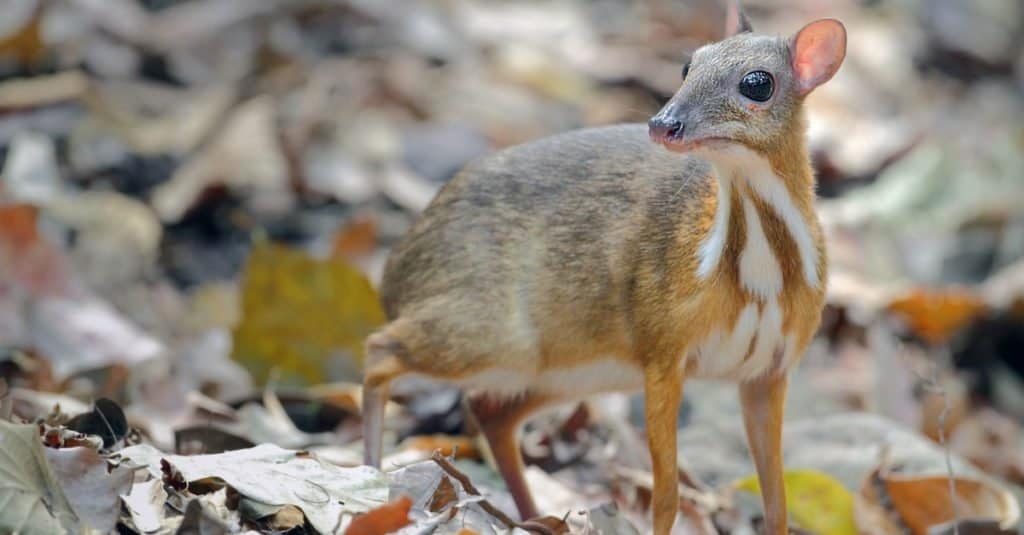A ruminant is an animal that has a unique digestive system. This digestive system typically consists of four stomachs. When it eats, the digestion process unfolds quite differently than that of non-ruminants, such as human beings.
Each of the four chambers (stomachs) has a name: the rumen, reticulum, omasum, and abomasum. All four of these chambers play an important role in the digestive process. The reason the process requires four stomachs, and is so complicated, is so the animal can derive the maximum amount of nutrition from what it’s eating.

Chevrotains are the most primitive of ruminants and have not changed much during their time on Earth.
©teekayu/Shutterstock.com
The Four Stomachs of a Ruminant
The digestive process in a ruminant is sequential because ruminants lack the proper enzymes to digest their food.
Rumen
The rumen is the first chamber and is responsible for softening the food up. Once the food is soft, the animal regurgitates it for additional chewing. The additional chewing serves as a digestive process on its own. It breaks down the food more than when the animal swallows it.
Reticulum
Together, with the Rumen, the reticulum makes up the vast majority of a ruminant’s stomach. The reticulum is the second chamber and is responsible for the heavier particles in the cud (the regurgitated mass of plant material).
Omasum
The third stomach within a ruminant, the omasum is spherical and both receives food from the reticulum and delivers food to the abomasum. Scientists are uncertain what the omasum does, other than facilitate the transportation of food from one chamber to the next.
Abomasum
The fourth and last chamber of the stomach’s digestive system, the abomasum is responsible for the final digestion process. It secretes several acids and, with the help of microorganisms, it digests the food enough for passage into the small intestine.
Examples of Ruminants
Not only do ruminants have four-chamber stomachs, but they’re also hooved. There are a large number of hooved animal species that chew their cud and process their food through four stomach chambers.
There are far more ruminants than are on this list, but this covers the broadest category.

Sheep are ruminants. That is, they have four-chamber stomachs.
©Paul Steven/Shutterstock.com
Why Are They Called Ruminants?
The process by which food is processed through the four stomachs is known as ‘rumination’, hence the name. It is simply a derivative of the term, rumination.
Ruminant Pronunciation
Ruminant is pronounced: ru – mi – nant




